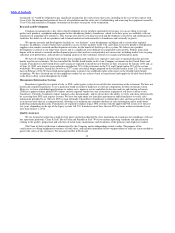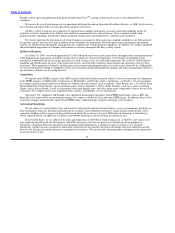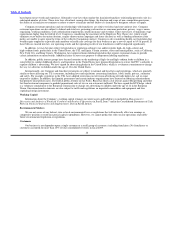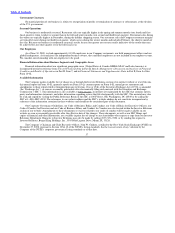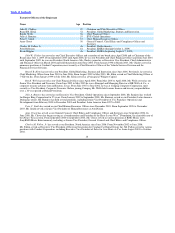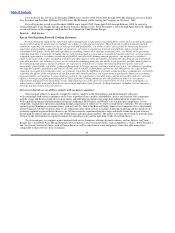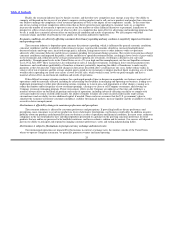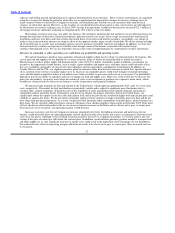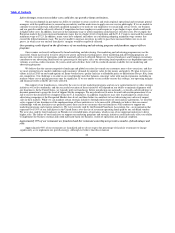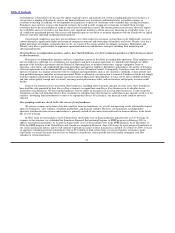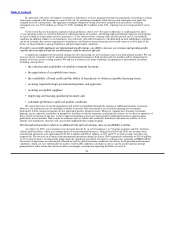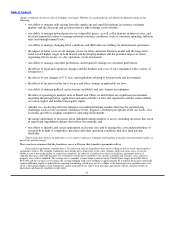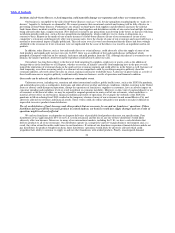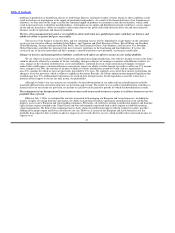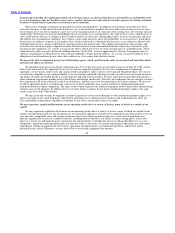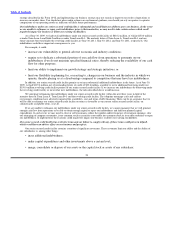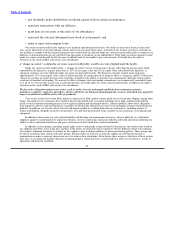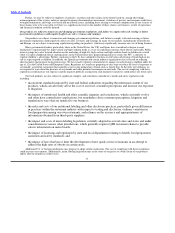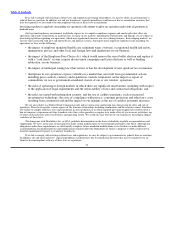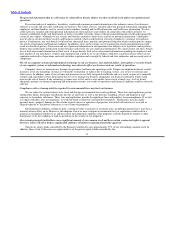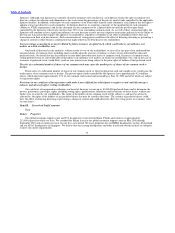Burger King 2009 Annual Report Download - page 26
Download and view the complete annual report
Please find page 26 of the 2009 Burger King annual report below. You can navigate through the pages in the report by either clicking on the pages listed below, or by using the keyword search tool below to find specific information within the annual report.
Table of Contents
In connection with sales of Company restaurants to franchisees, we have guaranteed certain lease payments of franchisees arising
from leases assigned to the franchisees as part of the sale, by remaining secondarily liable for base and contingent rents under the
assigned leases of varying terms. The aggregate contingent obligation arising from these assigned lease guarantees, excluding
contingent rent, was $74.0 million as of June 30, 2009, including $47.6 million in the U.K., expiring over an average period of seven
years.
To the extent that our franchisees experience financial distress, due to over−leverage or otherwise, it could negatively affect
(1) our operating results as a result of delayed or reduced payments of royalties, advertising fund contributions and rents for properties
we lease to them or claims under our lease guarantees, (2) our future revenue, earnings and cash flow growth and (3) our financial
condition. In addition, lenders to our franchisees were adversely affected by franchisees who defaulted on their indebtedness and there
can be no assurance that current or prospective franchisees can obtain necessary financing on favorable terms or at all in light of the
history of financial distress among franchisees and prevailing market conditions.
If we fail to successfully implement our international growth strategy, our ability to increase our revenues and operating profits
could be adversely affected and our overall business could be adversely affected.
A significant component of our growth strategy involves increasing our net restaurant count in our international markets. We can
increase our net restaurant count by opening new international restaurants in both existing and new markets and by minimizing the
number of closures in our existing markets. We and our franchisees face many challenges in opening new international restaurants,
including, among others:
• the selection and availability of suitable restaurant locations;
• the negotiation of acceptable lease terms;
• the availability of bank credit and the ability of franchisees to obtain acceptable financing terms;
• securing required foreign governmental permits and approvals;
• securing acceptable suppliers;
• employing and training qualified personnel; and
• consumer preferences and local market conditions.
We expect that most of our international growth will be accomplished through the opening of additional franchise restaurants.
However, our franchisees may be unwilling or unable to increase their investment in our system by opening new restaurants,
particularly if their existing restaurants are not generating positive financial results. Moreover, opening new franchise restaurants
depends, in part, upon the availability of prospective franchisees with the experience and financial resources to be effective operators of
Burger King restaurants. In the past, we have approved franchisees that were unsuccessful in implementing their expansion plans,
particularly in new markets. There can be no assurance that we will be able to identify franchisees who meet our criteria, or if we
identify such franchisees, that they will successfully implement their expansion plans.
Our international operations subject us to additional risks and costs and may cause our profitability to decline.
As of June 30, 2009, our restaurants were operated, directly by us or by franchisees, in 73 foreign countries and U.S. territories
(Guam and Puerto Rico, which are considered part of our international business). During fiscal 2008 and 2009, our revenues from
international operations were approximately $1,043.3 million and $944.7 million, or 42% and 37% of total revenues for both years,
respectively. The decrease in revenues from international operations during fiscal year 2009 is primarily attributable to $110.6 million,
or 4% of total revenues, of unfavorable impact from the significant movement of currency exchange rates, primarily in EMEA/APAC.
Our results of operations are substantially affected not only by global economic conditions, but also by local operating and economic
conditions, which can vary substantially by market. Unfavorable conditions can depress sales in a given market and may prompt
promotional or other actions that adversely affect our margins, constrain our operating flexibility or result in
24


